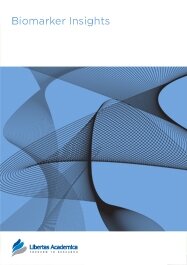

Publication Date: 23 Sep 2008
Journal: Biomarker Insights
Citation: Biomarker Insights 2008:3 435-451

1Departments of Radiology and Medical Physics, School of Medicine and Public Health, University of Wisconsin—Madison, Madison, Wisconsin, U.S.A. 2University of Wisconsin Paul P. Carbone Comprehensive Cancer Center, Madison, Wisconsin, U.S.A.
Abstract
Carcinoembryonic antigen (CEA), highly expressed in many cancer types, is an important target for cancer diagnosis and therapy. Radionuclide-based imaging techniques (gamma camera, single photon emission computed tomography [SPECT] and positron emission tomography [PET]) have been extensively explored for CEA-targeted cancer imaging both preclinically and clinically. Briefly, these studies can be divided into three major categories: antibody-based, antibody fragment-based and pretargeted imaging. Radiolabeled anti-CEA antibodies, reported the earliest among the three categories, typically gave suboptimal tumor contrast due to the prolonged circulation life time of intact antibodies. Subsequently, a number of engineered anti-CEA antibody fragments (e.g. Fab’, scFv, minibody, diabody and scFv-Fc) have been labeled with a variety of radioisotopes for CEA imaging, many of which have entered clinical investigation. CEA-Scan (a 99mTc-labeled anti-CEA Fab’ fragment) has already been approved by the United States Food and Drug Administration for cancer imaging. Meanwhile, pretargeting strategies have also been developed for CEA imaging which can give much better tumor contrast than the other two methods, if the system is designed properly. In this review article, we will summarize the current state-of-the-art of radionuclide-based cancer imaging targeting CEA. Generally, isotopes with short half-lives (e.g. 18F and 99mTc) are more suitable for labeling small engineered antibody fragments while the isotopes with longer half-lives (e.g. 123I and 111In) are needed for antibody labeling to match its relatively long circulation half-life. With further improvement in tumor targeting efficacy and radiolabeling strategies, novel CEA-targeted agents may play an important role in cancer patient management, paving the way to “personalized medicine”.
PDF (2.42 MB PDF FORMAT)
RIS citation (ENDNOTE, REFERENCE MANAGER, PROCITE, REFWORKS)
BibTex citation (BIBDESK, LATEX)
XML
PMC HTML


I have had a great experience with submitting my cancer prognosis study to Biomarker Insights. The comments from reviewers and associate editor are high quality and insightful. Congratulations and keep up the good work.

All authors are surveyed after their articles are published. Authors are asked to rate their experience in a variety of areas, and their responses help us to monitor our performance. Presented here are their responses in some key areas. No 'poor' or 'very poor' responses were received; these are represented in the 'other' category.See Our Results
Copyright © 2014 Libertas Academica Ltd (except open access articles and accompanying metadata and supplementary files.)
Facebook Google+ Twitter
Pinterest Tumblr YouTube